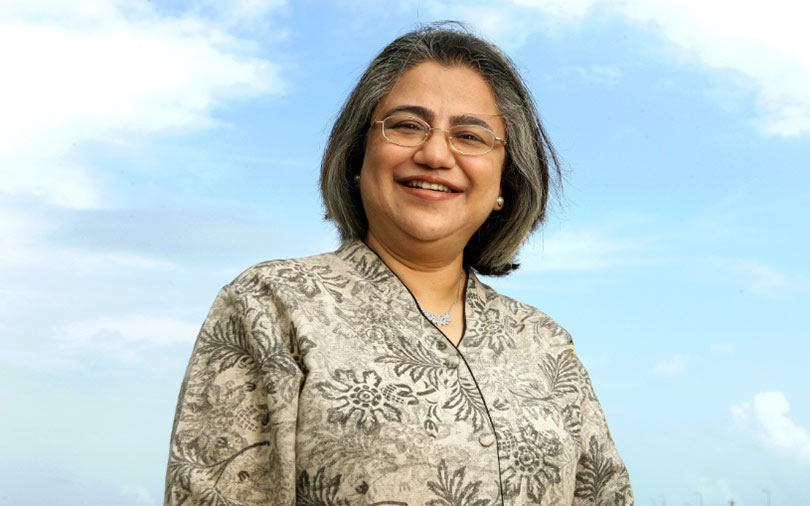
New net users offer high potential but barriers abound: Omidyar's Roopa Kudva


 Impact investor Omidyar Network—founded by eBay founder Pierre Omidyar and his wife in 2004—has committed more than $1 billion globally through investments in for-profit companies and grants to nonprofits. The firm has been operating in India for a decade and has backed ventures across sectors such as education, health, media and finance. It has stepped up the pace of investments in India this year, having struck nine deals so far compared with five in all of last year, according to VCCEdge, the data research platform of VCCircle.
Impact investor Omidyar Network—founded by eBay founder Pierre Omidyar and his wife in 2004—has committed more than $1 billion globally through investments in for-profit companies and grants to nonprofits. The firm has been operating in India for a decade and has backed ventures across sectors such as education, health, media and finance. It has stepped up the pace of investments in India this year, having struck nine deals so far compared with five in all of last year, according to VCCEdge, the data research platform of VCCircle.
The nine investments include six in mobile-focussed startups—Doubtnut, Pratilipi, Healofy, Vedantu, Kaleidofin and Affordplan. In an interaction with TechCircle, Omidyar India head Roopa Kudva throws light on the firm’s vision for India, the rationale for investing in startups and much more. Edited excerpts:
Omidyar seems to be more active this year. It has invested in six mobile-tech ventures. What’s the reason behind that?

At the end of last year, we had put out a paper called the “next half billion”. That paper talked about the opportunities to serve the next 500 million people who will come online through their mobile phones over the next five years. We looked at our portfolio and asked ourselves: ‘What have we learnt so far?’ We also did additional research to understand the characteristics of this next half a billion and concluded that this represents an attractive market opportunity for entrepreneurs.
However, these entrepreneurs have to be successful in working with this segment. They have to understand this segment is very different from the initial wave of internet users. They have income levels that are different and income profiles that are more volatile. Their education level is lower, language skills are different—the social context is really different.
So, if you have to succeed as entrepreneurs, you have to understand what the barriers are and build business models that address these barriers. We have identified seven barriers. One of the barriers was local language. Five years ago, we had identified vernacular as a key opportunity and we had invested in Dailyhunt. A few years back we had invested in a company called Indus OS. They all are tackling the vernacular issue.

So, we were early investors in, at least, one of the barriers—local language content. Now that we have identified six more barriers, we said that this is our investment thesis. [The other barriers include lower purchasing power, high data costs, women’s reticence to use the internet and lack of confidence to transact online.] Having done that and having identified the strategy, we systematically went about investing.
These six startups are from different segments, right? Is the diversification deliberate?
We invest in six sectors—education, emerging consumer-tech, financial services, digital identity, governance and property rights. In addition, we have identified these seven barriers. Each of these six investments addresses one or more of these barriers. For example, Pratilipi, Healofy and Doubtnut address the barrier of local language content. Pratilipi and Healofy are emerging tech and Doubtnut is education.

Do you see more follow-on investments in your portfolio this year?
Yes, we do.
Traditional VCs have been wary of ed-tech and impact investors like Omidyar have been filling this vacuum. Will we see more investments coming into this space?

Yes, you are right. Ed-tech has been one of the slower ones to take off. Of course, there is Byju’s, which is more of an exception. We have seen disruptions in all kinds of sectors around the world. But, even globally, education has not yet been truly disrupted by technology. The basic format—which is the teacher, the classroom and the blackboard—is centuries-old. India is not any different from the global trend.
There is a lot of money in education, be it from the government or the private sector. Education is also a very contentious issue for obvious reasons. In the last couple of years, we are seeing more entrepreneurs and better quality of deals. Some challenges with ed-tech are coming down because of lower data costs and better connectivity. Both Vedantu and Doubtnut have customers from many smaller cities and towns.
What challenges do you face when you are trying to invest in tech disruptors? What are things that you look for?

The first and foremost is the quality of the entrepreneur and his ability to scale up the business, the ability to build a team and attract high-quality talent. We also look at how big is the market. How unique and innovative is the solution? What is early data showing in terms of traction? Finally, even if it is difficult to predict, what will the unit economics look like? These are the factors that we would look at.
Can you tell us about the Omidyar team in India?
We have focussed on building our team since we found that there are opportunities here. We have 25 people in India, of which 16 are part of the investment team. We opened a new office in Bangalore a few months ago. Our investing team works across the six areas that I mentioned.

This interview is part of our InvestorSpeak series in which leading angel, seed or venture investors share their insights on the startup ecosystem in India.
